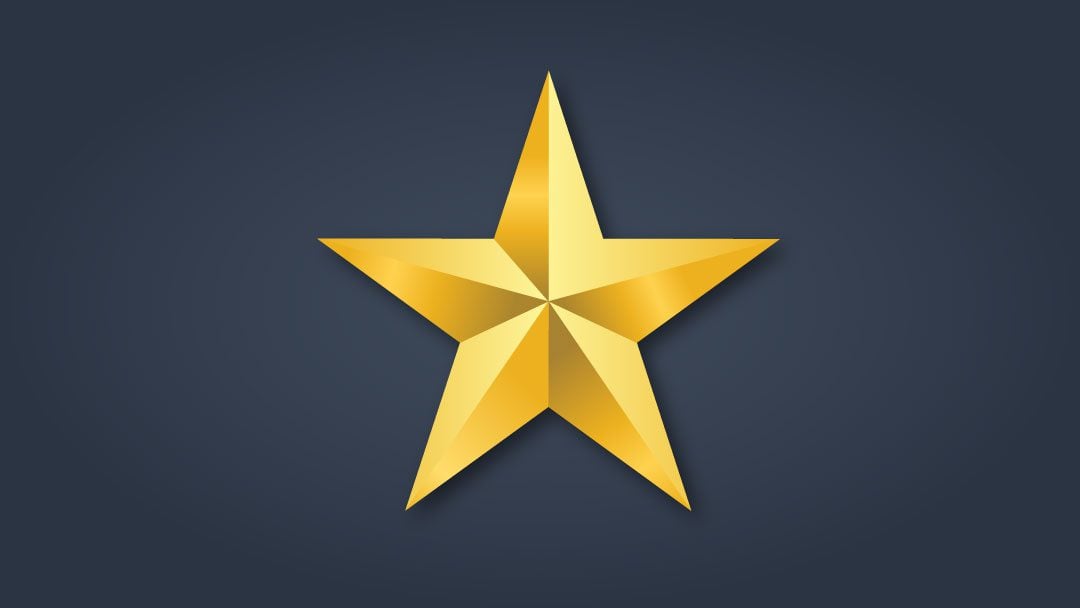You’re acing this interview. You showed up early, you didn’t spill coffee on your shirt and you remembered to print out a fresh copy of your resume. Not only are you totally qualified for this position, but you’ve even made the interviewer laugh.
Then you’re asked a question that stumps you. The interviewer wants you to tell him “about a time when [XYX] happened.” You draw a blank. There’s not a moment in your life you can remember, especially not a moment that will answer this question.
Relax. We’ve all been there. The good news is that you already know you’re going to be asked this sort of question and you can prepare for it. The STAR method (situation, task, action, result) is going to be your best friend. It’ll keep you calm, alleviate stress and help you think fast to form an impressive answer that you don’t stumble through.
Behavioral Questions and the STAR Method
Behavioral interview questions are the ones that require a real-life example as an answer. “What do you do when you disagree with the rest of the team?” “Tell me about a time when you discovered a better way to do a task.” The interviewer wants to learn more about skills and strengths, such as:
- Accuracy
- Analytical reasoning
- Creativity
- Interpersonal skills
- Perseverance
- Persuasiveness
- Presentation skills
- Problem-solving
- Teamwork
The STAR method will help you answer those questions. First, though, you have to recognize one is coming. Common openers to behavioral questions are:
- Describe a…
- Have you ever…
- Give me an example of…
- Tell me about…
- What do you do…
Your mission is to think of an appropriate example; give enough details to be clear; limit your explanation to avoid rambling; and be compelling and convincing. The STAR method is the structure for telling your story in the best way possible.
Breaking Down the STAR Method
When you’re asked a behavioral question and your brain grabs at a misshapen, broad scenario, the STAR method helps you compartmentalize that story so you can share it briefly and in a way that makes sense. Here’s how the components of the STAR method break down:
- Situation: Set the stage. Provide the details that are necessary for the rest of your story.
- Task: Describe what you were responsible for.
- Action: Explain the steps you took to deal with the situation.
- Result: Talk about the positive outcome(s).
How to Use the STAR Method
The four steps of the STAR method are easier said than done, so in this section we’ll go over how to conjure up all that information to actually convey your answer to the interviewer. For each step (situation, task, action, result), try to limit your response to two sentences.
Think of an example.
The STAR method is only as strong as the anecdote you apply it to. Your brain has to work fast enough to think up an appropriate example so you can answer the question. Before you go into your interview, think of some examples you can use to suit a variety of questions. For example, if you’re interviewing to be part of a design team, you may be asked, “Was there ever a time when you disagreed with other designers?” or “Give me an example of a project you worked on that had major time, budget or design constraints.” You can then think of relevant examples beforehand to be prepared.
While it’s worthwhile to make a list of potential questions you may be asked, a better starting point may be to make a list of your standout experiences and challenges. If you have five examples in your back pocket, you’ll likely be able to use a couple of them to answer whatever questions the interviewer throws at you. To match your examples to potential questions, list the requirements of the job you’re applying for, then think of the stories and qualifications that relate to those specific tasks or responsibilities.
Set up the situation.
Illustrate the situation without going into details that are outside the frame. What’s relevant to the question and the story? Leave the rest out.
For example, if you’re asked about a time when a client was unhappy with your design, you don’t have to talk about how you acquired the client and all of the projects you’d done for them that they were happy with. Instead, you could say, “At my last job, a new client decided they wanted to take the design in a new direction after we’d had several meetings about their original plans. The changes were major and would’ve required us to practically start from scratch.”
Clarify the task.
Where do you fit into this? What was your specific responsibility in the scenario? The interviewer doesn’t care about what the entire team or your supervisor did, he cares about what your specific involvement was. Your answer should start with “I,” not “we.” To continue with the example above, did you have to communicate to the client what was reasonable and possible at this stage, or were you one of the core designers who had to figure out what you could actually accomplish with the time and budget that was left?
Remember, you’re not at the “action” step yet – you’re still laying out the scenario by clarifying what you were tasked with. Put yourself back in the situation. At that moment, when you were faced with a challenge but hadn’t yet solved it, what would you have said your goal was?
Explain how you took action.
This is when you explain how you solved the problem. What steps did you take? Don’t be vague here. “I worked really hard” or “I had a conversation with the client” won’t cut it. What did you do or say?
This is the most important part of your STAR answer – it’s what shows your interviewer how you take action. Get specific. Who did you work with to solve the problem? What software did you use? How did you formulate your plan and carry through?
For example, “I first met with the rest of the design team to figure out what was possible. We spent three days having meetings and mapping out options using [software]. I then presented the client with three mockups – two within their budget and a third that would require renegotiations. I explained that the alternatives would solve [A, B, C problems].”
Brag about the result.
You didn’t choose an example that had an unhappy ending, so this is when you can pat yourself on the back (in the most humble way possible) for all the awesome work you did. Actions are not results – impact and outcomes are results. Drive the point home by sharing what happened and how it was beneficial. Bonus points if you can use numbers to back it up.
Also, the key here is to think about what the interviewer wants to know. Are they asking about how you hit the ball out of the park or are they asking about a time you failed but bounced back? Ideally, you’ll have examples ready to go that could suit either request.
If you did happen to choose a story with a negative ending, make sure to highlight what you got out of it. For example, let’s say your client scrapped the whole project – she didn’t like the alternatives you came up with and she refused to pay more. If your role was project manager, you probably learned an invaluable lesson about choosing the clients you work with, or maybe you came up with a new process for gathering client insight throughout the design process rather than at the end.
Practice before you go.
Having a vague idea of the stories you’ll use and the steps of the STAR method won’t prepare you for what to say in the interview. Practice at home first. Come up with five compelling work stories and then put each aspect of the STAR method together to formulate your full responses. Commit your responses to memory. You don’t want to memorize them to the point where you’ll sound robotic, but make sure you can recall all of the details and how you want to talk about them.
Break a Leg
You’re face-to-face with your interviewer. You’re wearing a freshly ironed shirt and your resume is printed on crisp, quality paper. You hear, “Have you ever…” and you grin to yourself – you’ve got this. The STAR method has your back, and as the interviewer continues with his question, you’ve already grabbed an example from your mind and you’ve started reciting it to yourself. You take a deep breath, give yourself a few seconds to fully recall your answer and then you chat about your experience in a magnetic, natural way.
Have an interview lined up? Check out these Common Marketing Interview Questions and How to Answer Them or these 15 Interview Questions to Ask and Prepare For.
Featured Image via apatpoh / shutterstock.com









Most Employers or better said HR persons are too strict to their low-level brains. If you say anything outside their dictionary (knowledge) it’s assumed to be nonsense to them and stand to lose the chance.
More tools to use for an interview online will go a long way exploring artificial intelligence and machine learning. Thumb up
Thanks Matthew!
“What do you do…. ”
I believe is situational question not Behavioral Interview Question as stated in your article.
My background is employee relations, employment law and training. I hope this helps.
Good article. Thanks. Jill
Hi Jill – Good point! I feel like when interviewees answer those sort of questions, they’re always drawing from their experience. “What do you do…” is often answered with a time they’ve been through it before.
Good article. It is very helpful for all employees and the HR of the company.
Thanks Thomas!